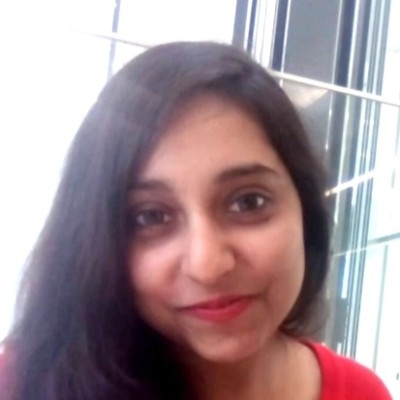|
The perception that ‘refugees pose a security threat’ has attracted lots of attention, however, this has nurtured ignorance and unappreciativeness for the beautiful art pieces that the refugees have blessed the world with. Their amazing artworks serve as an evidence for their resilience which needs to be recognised to tone down the overplayed rhetoric surrounding refugees. What are the words that come to our mind when we hear the word ‘refugees’? Probably victim, survivor, scapegoat, threat, Islamist, stranger, traumatised etc. One of the tropes that have topped the charts of the public and government of the Western countries is the refugee-threat nexus. With the growing incidents of attacks in Germany and France by those having a refugee background, security anxieties have risen among the natives. Eventually, this has lent more ears to the right-wing rhetoric of introducing further restrictive measures in the asylum process. The revelation that most of the identified attackers shared a history of mental health problems has also raised the alarm bells. It has stirred a debate that given their excruciatingly traumatic past should a causal link be assumed between their psychological instability and security threats. Since refugees have to suffer extreme economic and social hardships in their country of origin, and even during transit, they are likely to experience psychological trauma. Listening to or watching documentaries on refugee stories even makes us feel depressed, however, refugees have to live through those moments of grief. Of losing altogether their friends, family, home, financial and economic stability, dignity in the blink of an eye. They cannot escape from it. And even then, their privation does not end. They may have to embark on a perilous journey in the search of economic and physical security, experience hostility and possibly assault, live in inhumane detention centres with bare minimum facilities. On top of this, if they manage to receive asylum in the destination states, trying to restart a life in a strange country comes with its own set of problems. As per the research, the primary mental health disorders found among asylum seekers are PTSD, depression, and anxiety. Moreover, anxieties concerning the post-migration settlement process, are also found to exacerbate the mental health conditions. In such a situation, the psychological traumas of the refugees coupled with their lack of financial and social support are recognised to serve as a breeding ground for criminal-minded jihadist networks to advance their sadistic plans. Not only them but government agencies are also found guilty of exploiting the vulnerabilities of refugees, particularly children, to recruit them as soldiers in ethnic-political violence. Although a very small percentage of asylum seekers and refugees have been identified to be involved in terrorist-related activities, it has fanned the public’s xenophobic attitudes. Subsequently, host communities and governments are becoming reluctant to offer support to these people who are in utmost need of it. In extreme cases, they are themselves rubbing salt on the wound of the refugees by abusing them further. For instance, by hailing racist, Islamophobic remarks at them, placing them under stricter surveillance. Too much buzz around the weak psychological state of the refugees and its correlation with the security threat, however, undermines the huge level of resilience that refugees have shown. Not only that, highlighting a skewed perspective, also nurtures unappreciativeness and acknowledgement for the beautiful artistic expressions that refugees have provided the world with. Many refugees have breathed their pain, anxieties, bewilderment, sorrow on the canvas, poetry, music, movies, theatre etc. The purpose of this article is not to disregard the mental health problems that refugees may suffer with. Instead, this article aims to shed light on that side of the story which is not given its due admiration. Hope and pain! A pain of loss; losing a precious friend, family members, a dream, good health, a partner, a home. Hope to achieve peace, love, warmth, security, a dream job, a house, and recovery from sickness. We all may have experienced these emotions but would have found the words inadequate to express the intensity of those feelings. However, when these feelings interact with any art form- music, dance, paintings, poetry, drawing, theatre- together they create powerful magic. Magic of breathing a soul into a lifeless matter. Magic which enables the viewers and the artists to make sense of their complex emotions, connect with those who share the same dilemma of wanting to let their feelings flow but couldn’t, console each other, and try to search for a sense of peace. It creates a language that helps with healing a void of pain in the heart but also enigmatically it helps express hope. It was the trope of hope and pain that I found in the works of three refugee artists who have gone through the crises of displacement and survival in different geographical regions: Syria, Iran and Afghanistan. The first refugee’s artistic expression that I would like to point our glance at is the music band in Berlin, Germany, named ‘Musiqana’, which is formed by five Syrian refugees. The lead singer is Abdallah Rahhal who is one of the survivors of the perilous journey. Escaping Syria during a war to Lebanon, moving to Turkey, travelling across the Mediterranean Sea route in one of the flimsy crafts, and passing along the Balkan route, he finally managed to reach Germany in October 2015. However, his distress, like other Syrian refugees of the band, did not end there. They all have to deal with constant worry and fear about the safety of their loved ones who are stranded in Syria. Not only that, but they also have to live with the sorrow of watching their hometown collapsing into rubble and memorable spaces disappearing into thin air. However, when this ache finds words in Abdullah’s voice and meets the melodious Arabic tunes produced by the oud (played by Alaa Zaitouna), drum (by Ali Hasan and Ahmad Niou) and guitar (by Adel Sabawi), it weaves a hypnotic atmosphere. An atmosphere that not only soothes the pain of other refugees but also enthrals German nationals. The music also allows the band members and other Syrian refugees to relive the beautiful memories of pre-war Syrian life again, find solace for their pain, infuse hope and courage to rebuild a peaceful life again. “My feeling when I’m singing Tarab music is like being in the sky. It’s complete hope, like something good will happen.” Rahhal To enthral oneself in the magic that Musiqana band creates please follow their YouTube Channel
The second artist is Ali Banisadr who was born in Tehran, Iran in 1976. Finding himself surrounded by the chaos and dying breath of hope amid the Iranian revolution and the latter Iran-Iraq war, he and his family decided to flee to the United States when he was 12 years old. Instead of breaking down, he gradually learned to manoeuvre the hardships that have been thrown at his way since then, to push himself to achieve greater perfection in his art. His meticulousness reflects in many of his artworks. Drawing upon his childhood experiences of turbulence, explosions, vibrations, screams etc., he strokes a rhythmic sense of motion in rich aromatic colours on the canvas which delicately combines figuration and abstraction. Subsequently, his work takes the form of intricate and complex visuals that exude vitality surrounded by turbulence. Given below is one of his fascinating works. Titled as “In The Name Of”, the rich colours of the painting evokes a feeling of vibrancy but at the same time the onslaughts of paint strokes on its lush surface reflects the chaos of an attack. According to my perception, this paradoxical combination could also mean to express hope amid pain. Moreover, the background which seems fractured is said to be influenced by the artist’s memory of the sound of the breaking windows due to the explosion during the revolution and the Iran-Iraq war. While his paintings may be a medium through which he expresses the loss and pain that was inflicted by the revolution and Iran-Iraq war on many people with Iranian heritage, people from other cultural backgrounds also revel in the allure that his works evoke. This could be because Ali Banisadr through his art creates a world that reminds people of their own turbulent times. To lose oneself in the beautiful paint works of Ali Banisadr please refer to his website The last one whom I would like to highlight is a budding artist, a 23-year-old girl Mursal Zainuddin. She currently lives in Pakistan. When she was one month old, her family had to flee Afghanistan because of the ongoing war and the Taliban’s growing terror and persecution. However, the patriarchal nature of the Pakistani society combined with the difficulty to access good employment opportunities for the Afghan refugees in Pakistan has intensified her family’s struggle to rebuild a quality and peaceful life. In the face of adversities, Mursal spirit has not weakened but instead has bloomed beautifully. This especially mirrors her art pieces. Inspired by her feelings of pain, love, hope and desire to plead against the growing injustices, her artworks not only captivate the viewers, but it also reaches their heart and arouses a powerful aesthetic emotion. Magnifying negative incidents and exploiting them to deny protection to prioritise the safety of host communities above the refugees could not be considered an ethical solution. Morso, if we recollect the involvement of several countries, included Western countries, in escalating the political crisis in the country of origin such as in the case of the Syrian civil war. And also compared to the number of casualties and exodus that has occurred amid the civil war, the number of successful asylum applicants only make up a small portion. In such a situation, humanity can preserve if we encourage and appreciate more such artistic spaces for those who have suffered refugees’ crisis. A small act of compassion would not only bring sunshine to the life of refugees, but its rays would also light one’s soul with happiness and peace.
0 Comments
Leave a Reply. |
Author
Saher is studying for her Masters in Migration at Oxford University. She is supporting our Refugee Stories project. She joined us as part of the Oxford University Micro Internship programme.
|

 RSS Feed
RSS Feed

